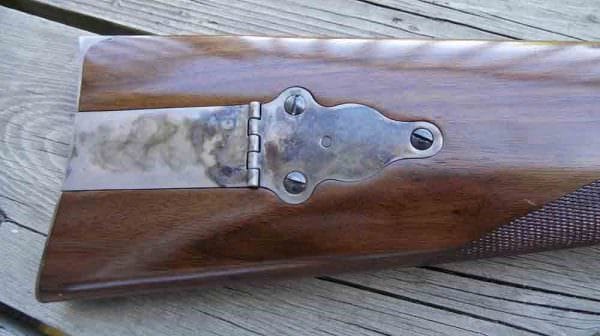

U.S.A. –-(Ammoland.com)- I fondly recall the first time I saw Quigley Down Under. I was probably ten, maybe a bit younger. Up until I saw that movie, the only westerns I watched were the classic 1950s gunslinger or Cowboys-and-Indians titles.
There was something very different about Quigley and I recall it always being somehow separate but equal to the others.
For those that haven’t have the privilege of seeing the film, I’ll give you a brief rundown before I get into the meat of the review. Set in Australia, the story follows the title character Matthew Quigley, played by Tom Selleck, as he reports for work on a massive ranch owned by Allan Rickman’s Mr. Marsden. Quigley demonstrates his marksmanship abilities for his new employer, however is quickly found opposite Marsden when asked to use his rifle to kill natives. Quigley’s refusal ends up getting him into lots of trouble when he is taken by surprise and left for dead in the Outback with his distraught and mentally unstable ward, Cora. It all ends well as Quigley uses his rifle to kill virtually all of Marsden’s men at long range, with the exception of Marsden himself in a duel with a handful of Army revolvers.
Uberti 1874 Sharps Down Under Rifle
The real star of the film, aside from Selleck, is his Sharps rifle, an ‘experimental rifle with experimental ammunition’. The character describes his own rifle as;
“…a lever-action, breech loader. Usual barrel length’s thirty inches. This one has an extra four. It’s converted to use a special forty-five caliber, hundred and ten grain metal cartridge, with a five-hundred and forty grain paper-patched bullet. It’s fitted with double set triggers, and a Vernier sight. It’s marked up to twelve-hundred yards. This one shoots a mite further.”

The Uberti 1874 Sharps Down Under Rifle is a faithful reproduction of the film rifles down to many of the small details, but with a few exceptions. The original film rifles, made by Shiloh Sharps, were chambered in .45-110 and used a 540gr paper-patched bullet. The sample rifle I received from Uberti uses the far more common .45-70. There are several reasons that I wanted to evaluate the .45-70 caliber for this rifle, with virtually all of them centering around the readily-available commercial options and ample reloading supplies.
There is a pretty big gap performance-wise between the .45-110 and .45-70, but supply is a quality of its own when it comes to today’s shooting market and the .45-70 has it where it counts. I was very happy with this selection, as the ammunition I received to evaluate is of the highest quality while still being modern in our understanding of the word.
I was, unfortunately, unable to get my hands on a Vernier rear sight for this review, but I was still able to fire the Sharps to a distance of 200 yards using the supplied barrel-mounted ladder-style rear sight. Right out of the box, the point of impact was low and right at 100 yards, but with the elevation ladder flipped up to the ‘200’ mark, I was dead-on and ringing steel like it was nothing.

Just like in the film, the rifle sports double set triggers. When the hammer is fully drawn back, the rear trigger can be pulled to ‘set’ the front one, thus giving it an extremely light pull. You can still fire the rifle by pulling the front trigger only if you need to. The light pull of the set triggers allows for more precision and gives the weapon the feel of a target rifle. Adding to that, the rifle is certainly up to the weight standard for a target rifle. The gun weighs in at a hefty 14 pounds, although it certainly feels like more when in use. The extra weight soaks up much of the .45-70 recoil which makes the rifle easy to fire.
A Sharps rifle is a very simple weapon to operate. The triggerguard doubles as a lever to drop the breechblock. Simply pull the lever to the front and the massive action block lowers to expose the chamber. Once the chamber is exposed, insert a cartridge and rotate the lever back into place, thus closing the breech. After you do this, pull the hammer to the rear and fire. After firing, lower the block and extract the fired case. It is important to note that the Sharps action has an extractor, not an ejector. The cases can sometimes spring out with gusto, but they are usually pulled out about half their length and must be rolled out or emptied by tipping the weapon up. I fired 80 rounds through the rifle without cleaning it and experienced no issues getting fired cases out.

When it comes to the appropriate lead ammunition, look no further than HSM and Black Hills. I was sent several boxes from both of these fine companies and was extremely impressed with the quality and accuracy of what they can produce. I measured the speed of the bullets using an Oehler 35P chronograph at a distance of five feet from the muzzle at 80 degrees Fahrenheit. Results for velocity are the average of 10 shots while accuracy is measured in MOA at 200 yards.
- Black Hills 405gr FPL—1276fps, 2MOA @200yds
- HSM 405gr RNFP—1417fps, 2.5MOA @200yds
Both the Black Hills and HSM loads displayed surprising shot-to-shot consistency with a respective standard deviation of 10 and 9 feet per second. This is lower SD (standard deviation) than most factory match ammo I run over my chronograph, including match loads in modern calibers like 6.5 Creedmoor. It may seem like poor performance to generate groups of ‘only’ 2MOA, but 4” at 200 yards is better than most people can do with their deer rifles or off-the-shelf AR-type weapons, and this rifle was shot with iron sights only. I suspect I could get even better performance with a dedicated target style rear sight and globe-style front, but I know you can get excellent results with the gun as-is.

I was overall very impressed with the quality of the Uberti 1874 Sharps Down Under Rifle. The weapon is a functional piece of art and displays gorgeous case-hardening and fine wood. The movie details like the pewter endcap and patchbox-style butt really bring out the spirit of the film while still looking authentic to the historical Sharps models. Uberti has a winner here and any fan of the movie or western pop culture would do themselves right by owning a replica of the most-recognized Sharps rifle in the world.
About Josh Wayner:
Josh Wayner has been writing in the gun industry for five years. He is an active competition shooter with 14 medals from Camp Perry. In addition to firearms-related work, Josh enjoys working with animals and researching conservation projects in his home state of Michigan.
